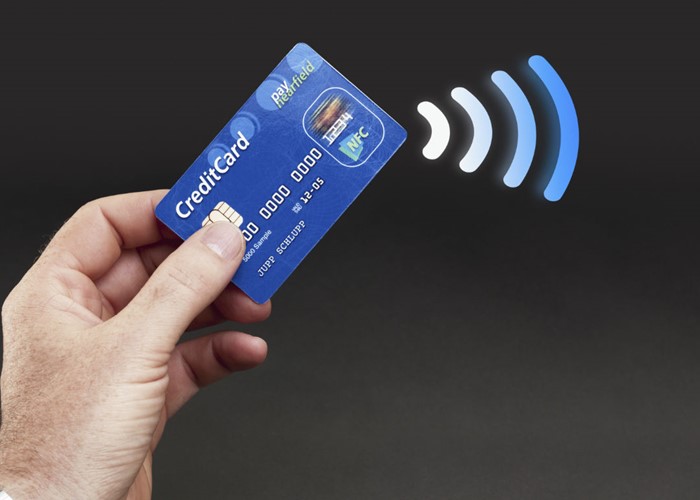Mobile and contactless payments UK: how do they work, how safe are they and how much can you spend?

Mobile and contactless payments are becoming increasingly popular. Here is everything you need to know.
Sections
What are contactless payments?
Contactless payments allow you to pay for purchases without having to enter your PIN.
Cards and other devices set up for contactless payments contain a chip and an antenna that uses wireless technology to send out a radio wave signal.
When you want to pay for something you just need to wave or tap your contactless-enabled card or device at a contactless payment terminal.
The card-reading terminal emits an electromagnetic field, which 'switches on' a card or device and exchanges information to authorise a payment.
Contactless payments have been introduced to make transactions quicker and easier and, for those set up on a mobile device, it could mean you get to leave your wallet at home.
What is the contactless payment limit?
You can currently use contactless payment technology to pay for transactions under £30 without entering any security information.
However, when using Apple Pay or Android Pay, retailers are able to waive the £30 limit as long as fingerprint or PIN code authorisation is used.
Pret, for example, has terminals set up to accept contactless payments via Apple Pay with no upper limit and will accept payments up to £250 for those using Android Pay.
We now accept Android Pay up to the value of £250 (handy if you need to buy coffee for the entire office) pic.twitter.com/aJSb7gRBfy
— Pret (@Pret) May 18, 2016
Are contactless cards safe?
Even though contactless card payments don’t require a PIN, card issuers will limit the number of contactless transactions that can be made in a day before a PIN is asked for to prevent fraud.
Fraudulent activity via contactless cards and devices are protected by the same rules that apply to other card payments. So if you fall victim to fraud your bank should refund you the money as long as it wasn’t down to your own negligence.
However, there is some evidence that fraudsters are using contactless card readers to steal sufficient details from people using contactless cards to perform transactions in certain online stores.
In a Which? investigation, researchers were able to buy simple contactless card-reading technology and lift key details from a contactless card to order items, including a TV for £3,000.
To combat this, there have been a flood of products like metal cases on the market to help keep this information safe from scammers. However, tin foil is also known to be just as effective at preventing the card from being read.
Read: How a foil-lined wallet can protect you from fraud for more.
How to get contactless payments
Contactless technology is now available on most prepaid, debit, charge and credit cards and there are now 86.5 million contactless cards in issue in the UK, according to the UK Card Association.
You can tell if one of your cards is set up for contactless by looking for this radio wave symbol.
Those with a smartphone, tablet or smartwatch may now also be able to use their devices for contactless payments via Apple Pay and Android Pay.
These two systems allow you to store your credit or debit card details in a secure mobile wallet and use your device with a contactless reader to take payments rather than reaching for your wallet.
These systems have an extra layer of security in that you may need to use a PIN, pattern or fingerprint to authorise the payment.
Apple Pay is available on the iPhone 6, iPhone 6 Plus and the Apple Watch. Meanwhile Android Pay is available on any Android device which has a near-field communication chip (NFC) and operating software KitKat 4.4 or above.
Destroy your credit card debt with a 0% balance transfer deal
Where can I use contactless payments?
Contactless payments via credit and debit cards are now accepted in a wide variety of shops, pubs, cafes and restaurants including the likes of Tesco, Waitrose, Boots, KFC, Ikea and McDonalds.
You can tell contactless card payments are accepted by looking out for the radio wave symbol at a payment point.
Anywhere that accepts contactless payment should also be compatible with Apple Pay and Android Pay. But for further signs either of these are accepted look out for these logos too.
Can I use contactless payments in other countries?
If you are travelling abroad, you can use your contactless card or device with retailers that have contactless readers.
However, the contactless transaction limit of £30 may vary in different countries.
The UK Cards Association gives the example of equivalent local limits of €25 (£18) in France, $100(£48) in Canada and $100 (£45) in Australia.
Accidental contactless payments
Contactless terminals are set up so that they only take one payment from one card for any one transaction.
They are designed to reject payment if two contactless payment methods are presented at the same time, so there should be no risk of an accidental payment with the wrong card or device or even a duplicate payment from the same card or device.
What if I don’t want to go contactless?
Contactless payments are designed to make paying for things faster and more convenient for you but with some safety concerns it’s understandable why some would rather opt out.
If you don’t want a contactless debit or credit card you should contact your provider to see if you can opt out and get a card without the contactless technology built-in.
Lloyds, Halifax, Barclays, HSBC, Nationwide, Santander, TSB and Barclays all confirmed they give customers a choice at sign up and would swap a contactless card for a contact card if a customer requested it.
Destroy your credit card debt with a 0% balance transfer deal
Comments
Be the first to comment
Do you want to comment on this article? You need to be signed in for this feature